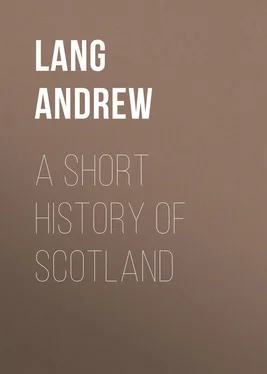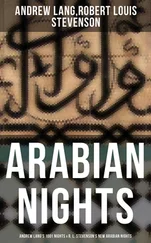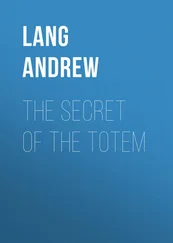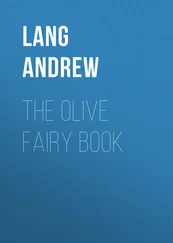Andrew Lang - A Short History of Scotland
Здесь есть возможность читать онлайн «Andrew Lang - A Short History of Scotland» — ознакомительный отрывок электронной книги совершенно бесплатно, а после прочтения отрывка купить полную версию. В некоторых случаях можно слушать аудио, скачать через торрент в формате fb2 и присутствует краткое содержание. Жанр: foreign_antique, foreign_prose, на английском языке. Описание произведения, (предисловие) а так же отзывы посетителей доступны на портале библиотеки ЛибКат.
- Название:A Short History of Scotland
- Автор:
- Жанр:
- Год:неизвестен
- ISBN:нет данных
- Рейтинг книги:4 / 5. Голосов: 1
-
Избранное:Добавить в избранное
- Отзывы:
-
Ваша оценка:
- 80
- 1
- 2
- 3
- 4
- 5
A Short History of Scotland: краткое содержание, описание и аннотация
Предлагаем к чтению аннотацию, описание, краткое содержание или предисловие (зависит от того, что написал сам автор книги «A Short History of Scotland»). Если вы не нашли необходимую информацию о книге — напишите в комментариях, мы постараемся отыскать её.
A Short History of Scotland — читать онлайн ознакомительный отрывок
Ниже представлен текст книги, разбитый по страницам. Система сохранения места последней прочитанной страницы, позволяет с удобством читать онлайн бесплатно книгу «A Short History of Scotland», без необходимости каждый раз заново искать на чём Вы остановились. Поставьте закладку, и сможете в любой момент перейти на страницу, на которой закончили чтение.
Интервал:
Закладка:
As there was no fixed capital, the King’s Court, in David’s time, followed the King in his annual circuits through his realm, between Dumfries and Inverness. Later, the regions of Scotia (north of Forth), Lothian, and the lawless realm of Galloway, had their Grand Justiciaries, who held the Four Pleas. The other pleas were heard in “Courts of Royalty” and by earls, bishops, abbots, down to the baron, with his “right of pit and gallows.” At such courts, by a law of 1180, the Sheriff of the shire, or an agent of his, ought to be present; so that royal and central justice was extending itself over the minor local courts. But if the sheriff or his sergeant did not attend when summoned, local justice took its course.
The process initiated by David’s son, William the Lion, was very slowly substituting the royal authority, the royal sheriffs of shires, juries, and witnesses, for the wild justice of revenge; and trial by ordeal, and trial by combat. But hereditary jurisdictions of nobles and gentry were not wholly abolished till after the battle of Culloden! Where Abbots held courts, their procedure, in civil cases, was based on laws sanctioned by popes and general councils. But, alas! the Abbot might give just judgment; to execute it, we know from a curious instance, was not within his power, if the offender laughed at a sentence of excommunication.
David and his successors, till the end of the thirteenth century, made Scotland a more civilised and kept it a much less disturbed country than it was to remain during the long war of Independence, while the beautiful abbeys with their churches and schools attested a high stage of art and education.
CHAPTER VI. MALCOLM THE MAIDEN
The prominent facts in the brief reign of David’s son Malcolm the Maiden, crowned (1153) at the age of eleven, were, first, a Celtic rising by Donald, a son of Malcolm MacHeth (now a prisoner in Roxburgh Castle), and a nephew of the famous Somerled Macgillebride of Argyll. Somerled won from the Norse the Isle of Man and the Southern Hebrides; from his sons descend the great Macdonald Lords of the Isles, always the leaders of the long Celtic resistance to the central authority in Scotland. Again, Malcolm resigned to Henry II. of England the northern counties held by David I.; and died after subduing Galloway, and (on the death of Somerled, said to have been assassinated) the tribes of the isles in 1165.
Ambition to recover the northern English counties revealed itself in the overtures of William the Lion, – Malcolm’s brother and successor, – for an alliance between Scotland and France. “The auld Alliance” now dawned, with rich promise of good and evil. In hopes of French aid, William invaded Northumberland, later laid siege to Carlisle, and on July 13, 1174, was surprised in a morning mist and captured at Alnwick. Scotland was now kingless; Galloway rebelled, and William, taken a captive to Falaise in Normandy, surrendered absolutely the independence of his country, which, for fifteen years, really was a fief of England. When William was allowed to go home, it was to fight the Celts of Galloway, and subdue the pretensions, in Moray, of the MacWilliams, descendants of William, son of Duncan, son of Malcolm Canmore.
During William’s reign (1188) Pope Clement III. decided that the Scottish Church was subject, not to York or Canterbury, but to Rome. Seven years earlier, defending his own candidate for the see of St Andrews against the chosen of the Pope, William had been excommunicated, and his country and he had unconcernedly taken the issue of an Interdict. The Pope was too far away, and William feared him no more than Robert Bruce was to do.
By 1188, William refused to pay to Henry II. a “Saladin Tithe” for a crusade, and in 1189 he bought from Richard I., who needed money for a crusade, the abrogation of the Treaty of Falaise. He was still disturbed by Celts in Galloway and the north, he still hankered after Northumberland, but, after preparations for war, he paid a fine and drifted into friendship with King John, who entertained his little daughters royally, and knighted his son Alexander. William died on December 4, 1214. He was buried at the Abbey of Arbroath, founded by him in honour of St Thomas of Canterbury, who had worked a strange posthumous miracle in Scotland. William was succeeded by his son, Alexander II. (1214-1249).
Under this Prince, who successfully put down the usual northern risings, the old suit about the claims to Northumberland was finally abandoned for a trifling compensation (1237). Alexander had married Joanna, daughter of King John, and his brother-in-law, Henry III., did not press his demand for homage for Scotland. The usual Celtic pretenders to the throne were for ever crushed. Argyll became a sheriffdom, Galloway was brought into order, and Alexander, who died in the Isle of Kerrera in the bay of Oban (1249), well deserved his title of “a King of Peace.” He was buried in Melrose Abbey. In his reign the clergy were allowed to hold Provincial or Synodal Councils without the presence of a papal Legate (1225), and the Dominicans and Franciscans appeared in Scotland.
The term King of Peace was also applied to Alexander III., son of the second wife of Alexander II., Marie de Coucy. Alexander came to the throne (1249) at the age of eight. As a child he was taken and held (like James II., James III., James V., and James VI.) by contending factions of the nobles, Henry of England intervening. In 1251 he wedded another child, Margaret, daughter of Henry III. of England, but Henry neither forced a claim to hold Scotland during the boy’s minority (his right if Scotland were his fief), nor in other respects pressed his advantage. In February 1261-1262 a girl was born to Alexander at Windsor; she was Margaret, later wife of Eric of Norway. Her daughter, on the death of Alexander III. (March 19, 1286), was the sole direct descendant in the male line.
After the birth of this heiress, Alexander won from Norway the isles of the western coast of Scotland in which Norse chieftains had long held sway. They complained to Hakon of Norway concerning raids made on them by the Earl of Ross, a Celtic potentate. Alexander’s envoys to Hakon were detained, and in 1263, Hakon, with a great fleet, sailed through the islands. A storm blew most of his Armada to shore near Largs, where his men were defeated by the Scots. Hakon collected his ships, sailed north, and (December 15) died at Kirkwall. Alexander now brought the island princes, including the Lord of Man, into subjection; and by Treaty, in 1266, placed them under the Crown. In 1275 Benemund de Vicci (called Bagimont), at a council in Perth, compelled the clergy to pay a tithe for a crusade, the Pope insisting that the money should be assessed on the true value of benefices – that is, on “Bagimont’s Roll,” – thenceforth recognised as the basis of clerical taxation. In 1278 Edward I. laboured to extract from Alexander an acknowledgment that he was England’s vassal. Edward signally failed; but a palpably false account of Alexander’s homage was fabricated, and dated September 29, 1278. This was not the only forgery by which England was wont to back her claims.
A series of bereavements (1281-1283) deprived Alexander of all his children save his little grandchild, “the Maid of Norway.” She was recognised by a great national assembly at Scone as heiress of the throne; and Alexander had no issue by his second wife, a daughter of the Comte de Dreux. On the night of March 19, 1285, while Alexander was riding from Edinburgh to visit his bride at Kinghorn, his horse slipped over a cliff and the rider was slain.
CHAPTER VII. ENCROACHMENTS OF EDWARD I. – WALLACE
Интервал:
Закладка:
Похожие книги на «A Short History of Scotland»
Представляем Вашему вниманию похожие книги на «A Short History of Scotland» списком для выбора. Мы отобрали схожую по названию и смыслу литературу в надежде предоставить читателям больше вариантов отыскать новые, интересные, ещё непрочитанные произведения.
Обсуждение, отзывы о книге «A Short History of Scotland» и просто собственные мнения читателей. Оставьте ваши комментарии, напишите, что Вы думаете о произведении, его смысле или главных героях. Укажите что конкретно понравилось, а что нет, и почему Вы так считаете.












